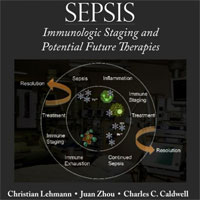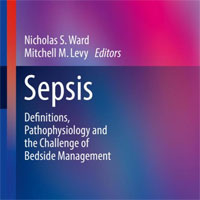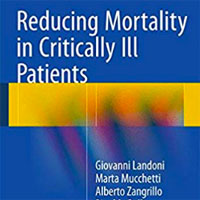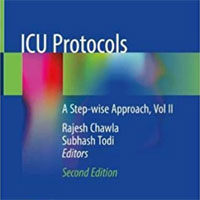Tag: inflammation
Vitamin D Dynamics in Severe ARDS Patients on ECMO
This retrospective study investigated time-dependent changes in vitamin D levels and their correlation with disease severity and inflammation in 24 invasively mechanically ventilated patients with acute respiratory distress... read more
Glycemic Control Role in Inflammation Markers and Clinical Outcomes in Type 2 Diabetes Patients with Severe COVID-19
This study demonstrates that among hospitalized COVID-19 patients with type 2 diabetes mellitus, poor glycemic control (HbA1c ≥ 7%) correlates with increased systemic inflammation, greater disease severity, and worse clinical... read more
Fluid Management Impact on Outcomes in Sequential Extracorporeal Support
Sepsis is a life-threatening condition characterized by dysregulated inflammatory responses, often leading to multiple organ dysfunction and high mortality rates. Continuous renal replacement therapy (CRRT) and extracorporeal... read more
Leptin and Linterlukin-6 Relationship and Influence of Mortality in Sepsis
High leptin levels might counteract the adverse prognostic effect of elevated IL-6 on septic mortality. At the same IL-6 level, leptin could predict septic mortality. Leptin might be a protecting factor for men and gender-different... read more
Systemic Corticosteroids for Inflammatory Disorders in Pediatrics
This comprehensive volume provides current state of the art of the use of corticosteroids in the pediatric patient. It consists of 14 chapters written by leading authors from different countries. The first chapters cover... read more
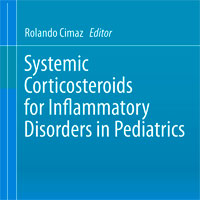
Severe Trauma and Sepsis: Organ Damage and Tissue Repair
This book discusses recent progress in organ damage and tissue repair following severe trauma and sepsis. In part 1, it introduces the theory and clinical practice in organ damage. In part 2, it covers all the subjects... read more
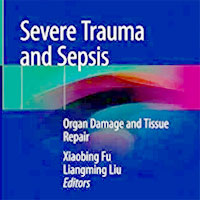
Predicting Sudden Decrease in Oxygenation in Mechanically Ventilated ICU Patients as a Surrogate Marker for ARDS
Acute Respiratory Distress Syndrome (ARDS) is a life-threatening form of respiratory failure characterized by widespread lung inflammation that severely impairs oxygenation. Affecting millions of patients worldwide, ARDS... read more
Unlocking the Predictive Power of Nutritional Scores in Septic Patients
The study highlights the mNUTRIC score's practicality and reliability in assessing nutritional and inflammatory risks in septic patients, particularly in non-ICU settings. These findings suggest its potential utility... read more
VEGFR1 Genetic Regulation During Sepsis and Association with ARDS Susceptibility
We identified biologically relevant protein quantitative trait loci (pQTLs) of vascular endothelial growth factor receptor 1 (VEGFR1) levels during sepsis in TCF20 and identified CYP2D6 as the gene more biologically implicated.... read more
Cytokeratin-18 Levels in COVID-19 Patients
This study analyzed 176 samples, including 63 ICU-admitted patients and 88 non-ICU-admitted patients. A substantial difference was found between the AST and CK-18 levels of the patients receiving ICU care and those who did... read more
Prognostic Value of Composite Inflammatory Markers in COPD Patients
Elevated systemic immune inflammation index (SII), systemic inflammatory response index (SIRI), pan-immune inflammation value (PIV), neutrophil-to-lymphocyte ratio (NLR), and platelet-to-lymphocyte ratio (PLR) are associated... read more
Using Critical Ultrasound To Predict Early Diagnosis of ICU-acquired Weakness in Septic Patients
This study uncovered pivotal indicators for predicting the occurrence of ICUAW in septic patients. Despite no significant difference in age, gender, BMI, BSA, or SOFA scores between the two groups, the significant differences... read more
Inflammatory Markers and Severity in COVID-19 Patients with Clostridioides Difficile Co-Infection
The interplay of Severe Acute Respiratory Syndrome Coronavirus 2 (SARS-CoV-2) infection and Clostridioides difficile infection (CDI) poses a critical clinical challenge. The resultant inflammatory milieu and its impact... read more
Fluid Bolus Therapy with 20% Albumin vs. Crystalloid-based Regimen
In this trial involving adult patients undergoing cardiac surgery with cardiopulmonary bypass, 20% albumin fluid bolus therapy (FBT) compared to crystalloid FBT did not decrease the occurrence of acute kidney injury (AKI).... read more
Sepsis Patients with Disseminated Intravascular Coagulation
Sepsis is a life-threatening organ dysfunction caused by dysregulation of the body's response to infection, and is one of the leading causes of death in intensive care units. In sepsis, the systemic inflammatory reaction... read more
Evaluation Effects of Nebulized Hypertonic Saline and Nebulized Corticosteroids in Patients with ARDS
Acute respiratory distress syndrome (ARDS) is a common clinical syndrome of acute respiratory failure as a result of diffuse lung inflammation and oedema manifested by hypoxemia and stiffness in the lungs. This study... read more
Personalized Therapies in ARDS
Acute respiratory distress syndrome (ARDS) can result from a variety of clinical conditions, causing lung injury either directly through local inflammation or indirectly because of systemic inflammatory mediators ARDS is... read more
Relationship between Concentrations of Oxygen and Levels of Oxidative Stress in Patients Receiving Oxygen Therapy for Severe COVID-19 Pneumonia
We evaluated the potential of high-flow oxygen therapy to increase oxidative stress and inflammation in COVID-19 patients. Our observation of decreased MDA levels when transitioning hypertensive patients from high-flow to... read more
Outcomes and inflammation changes in different types of immunocompromised patients with critically ill COVID-19 admitted to ICU
Critically ill COVID-19 patients admitted to the ICU exhibit distinct clinical outcomes based on their immunosuppression status, with cancer patients facing the highest mortality rate due to variations in inflammatory responses... read more
Management of Dysregulated Immune Response in the Critically Ill
This book, part of the European Society of Intensive Care Medicine (ESICM) textbook series, deals with dysregulated host response a relatively new term introduced by the Sepsis-3 definitions in 2016. In contrast to systemic... read more
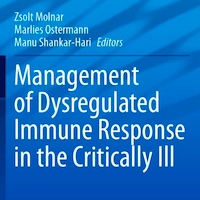
Distinct Immune Profiles and Clinical Outcomes in Sepsis Subphenotypes Based on Temperature Trajectories
Sepsis subphenotypes identified using the universally available measurement of body temperature had distinct immune profiles. Hypothermic patients, who had the highest mortality rate, also had the lowest levels of most pro-... read more
COVID-19 Pneumonia: Different Respiratory Treatments for Different Phenotypes?
Type L and Type H patients are best identified by CT scan and are affected by different pathophysiological mechanisms. If not available, signs which are implicit in Type L and Type H definition could be used as surrogates:... read more




